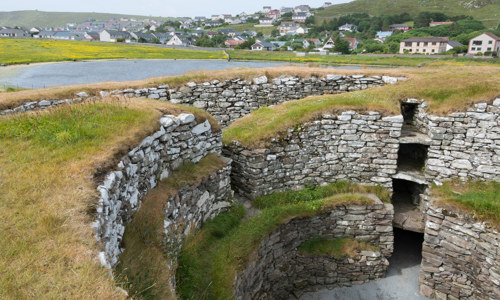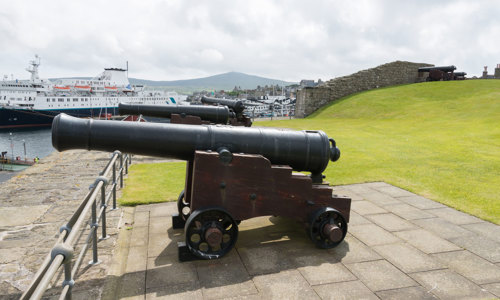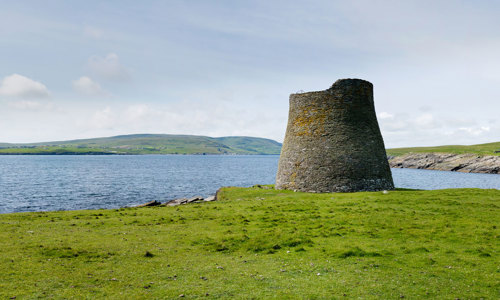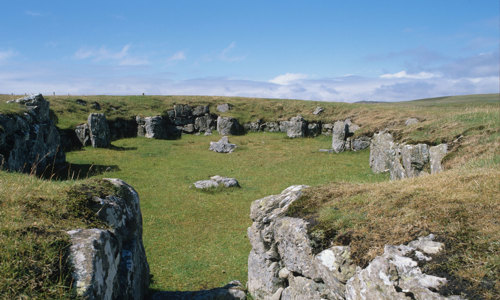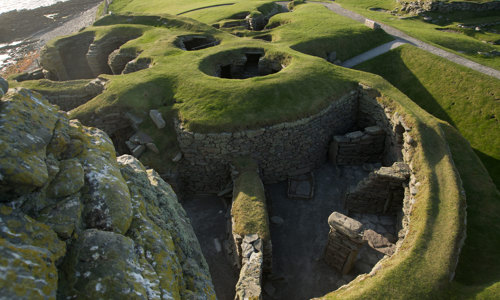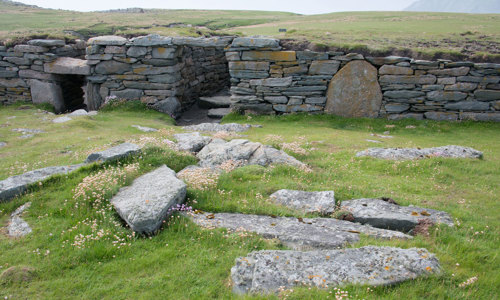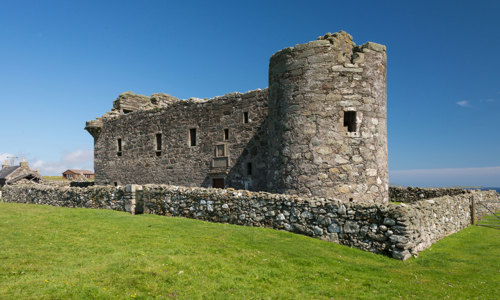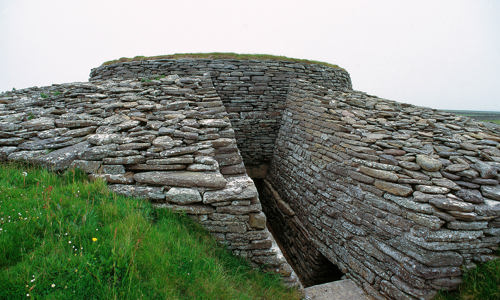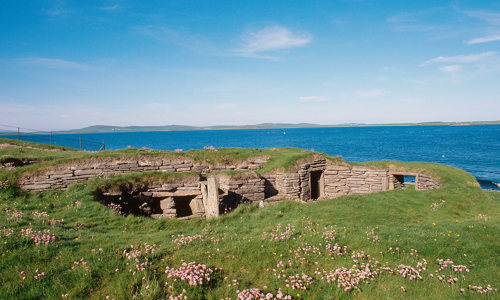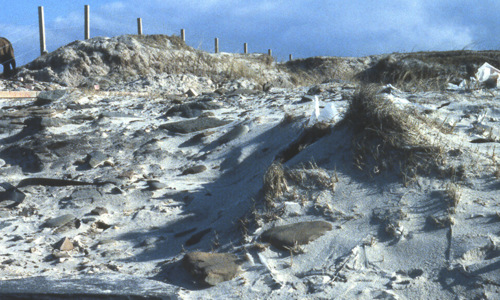History
Patrick Stewart succeeded his father, Robert, to the earldom of Orkney and lordship of Shetland in 1592. In 1599, he began construction of his main residence at Scalloway, near the Law Ting Holm of Tingwall, the principal meeting place for the head court on Shetland.
Earl Patrick’s rule was an unpopular one, and Scalloway Castle became a symbol of his ruthless oppression of the Shetland people. ‘Black Patie’ came to embody the tyranny of rule from outside Shetland, and the destruction of traditional Shetland ways.
He was arrested in 1609, and executed along with his son Robert in Edinburgh in 1615. At his trial, Patrick was accused of forcing the inhabitants of Orkney and Shetland to labour on the construction of his residences.
A fine tower-house
Scalloway Castle served as both a residence and a courthouse. Situated on a natural promontory, its surviving tower house would originally have been surrounded by ancillary buildings and yards.
A now-worn away Latin inscription above the door at Scalloway Castle featured a bible quote from Matthew 7:24-26:
‘Ut domus cuius crepidoinis est in a silicis vadum sto sive in sand vadum cado.’
This translates as ‘That house whose foundation is rock will stand, but will perish if it be shifting sand.’
The castle had all the features of a sophisticated late-1500s tower house:
• a wide scale and platt staircase
• integral kitchen
• private suites of accommodation on the top floors
It shared a lot in common with another one of Patrick’s constructions, the Earl’s Palace at Kirkwall.
It’s L-shaped in plan, with the entrance in the projecting jamb at ground level. The kitchen, stores and well were all at ground level.
The great hall occupied the whole first floor. As with the halls of medieval castles, it would have been used both to entertain guests and dispense justice. The two top floors were home to the earl’s private suite and guest rooms.
After Black Patie
Scalloway continued to be used for administration and justice after Black Patie’s downfall.
The ‘maiden’, an early form of guillotine, was still in use in Scalloway at 1640, when a new blade was ordered – a grim reminder of the kind of justice delivered here. English soldiers were quartered in and about the castle during the 1650s.
By 1676, the castle’s doors and windows were destroyed, and the roof timbers too rotten to be repaired. The author Martin Martin wrote: ‘This ancient house is almost ruinous, there being no care taken to repair it’.


